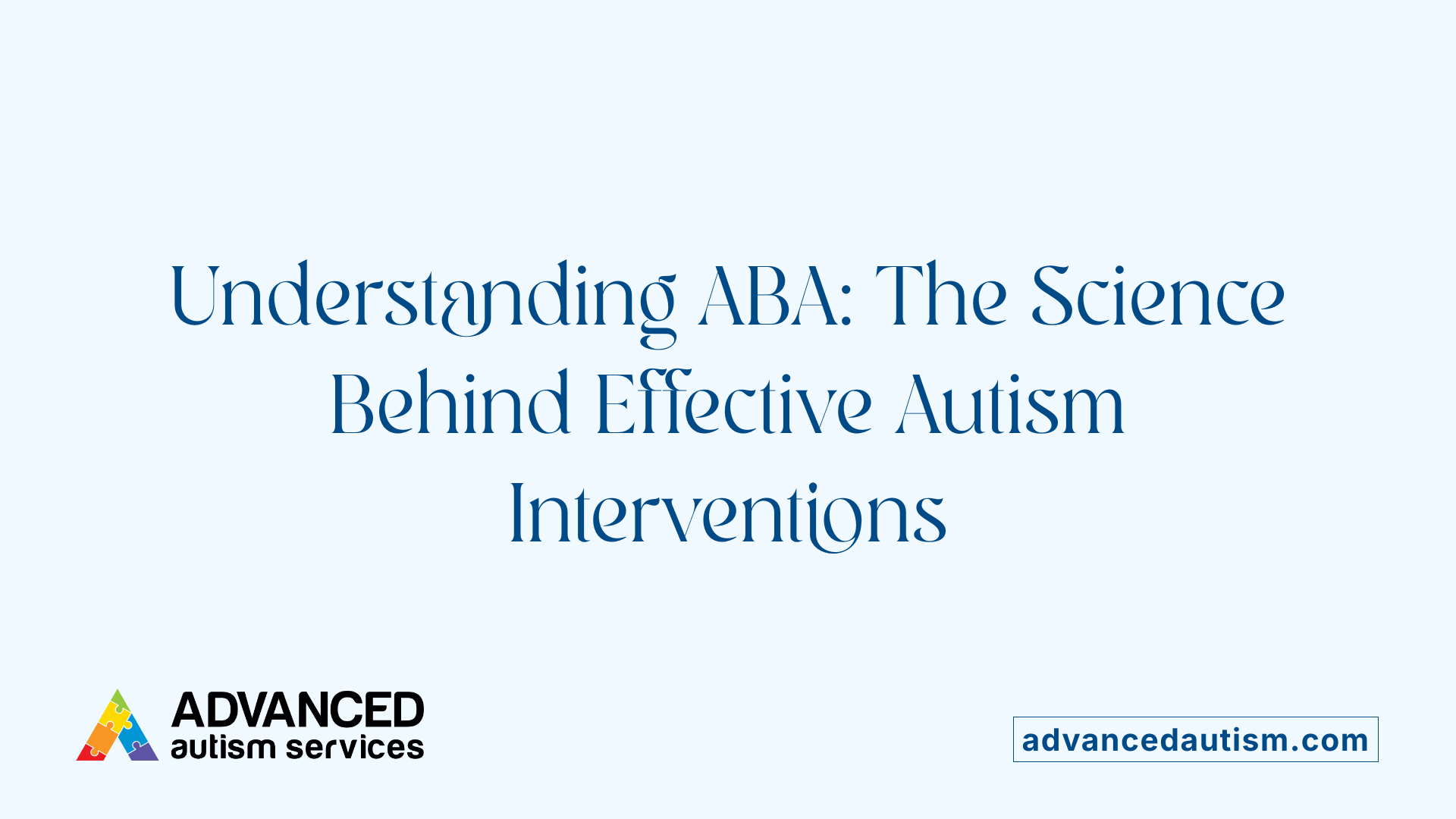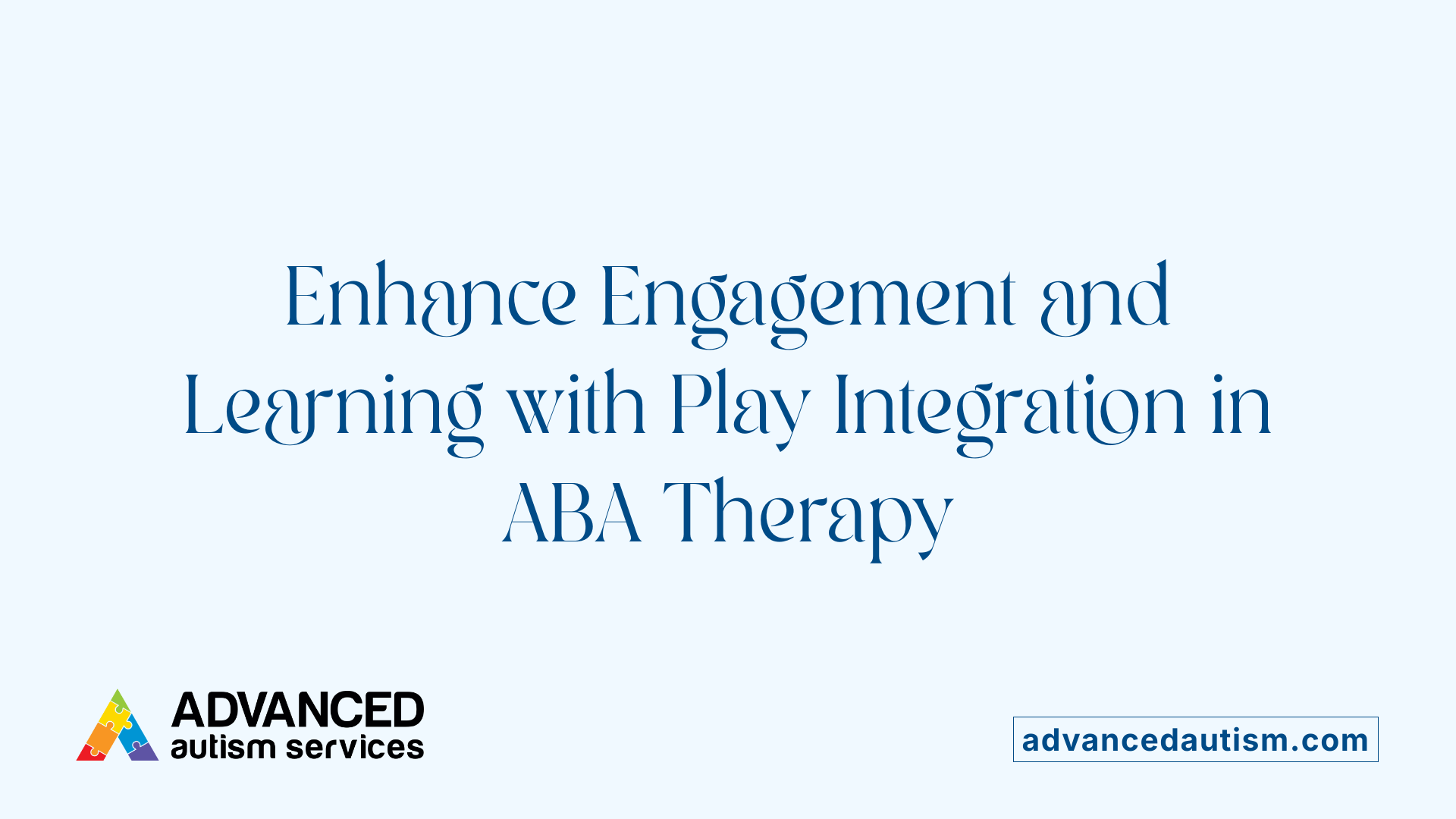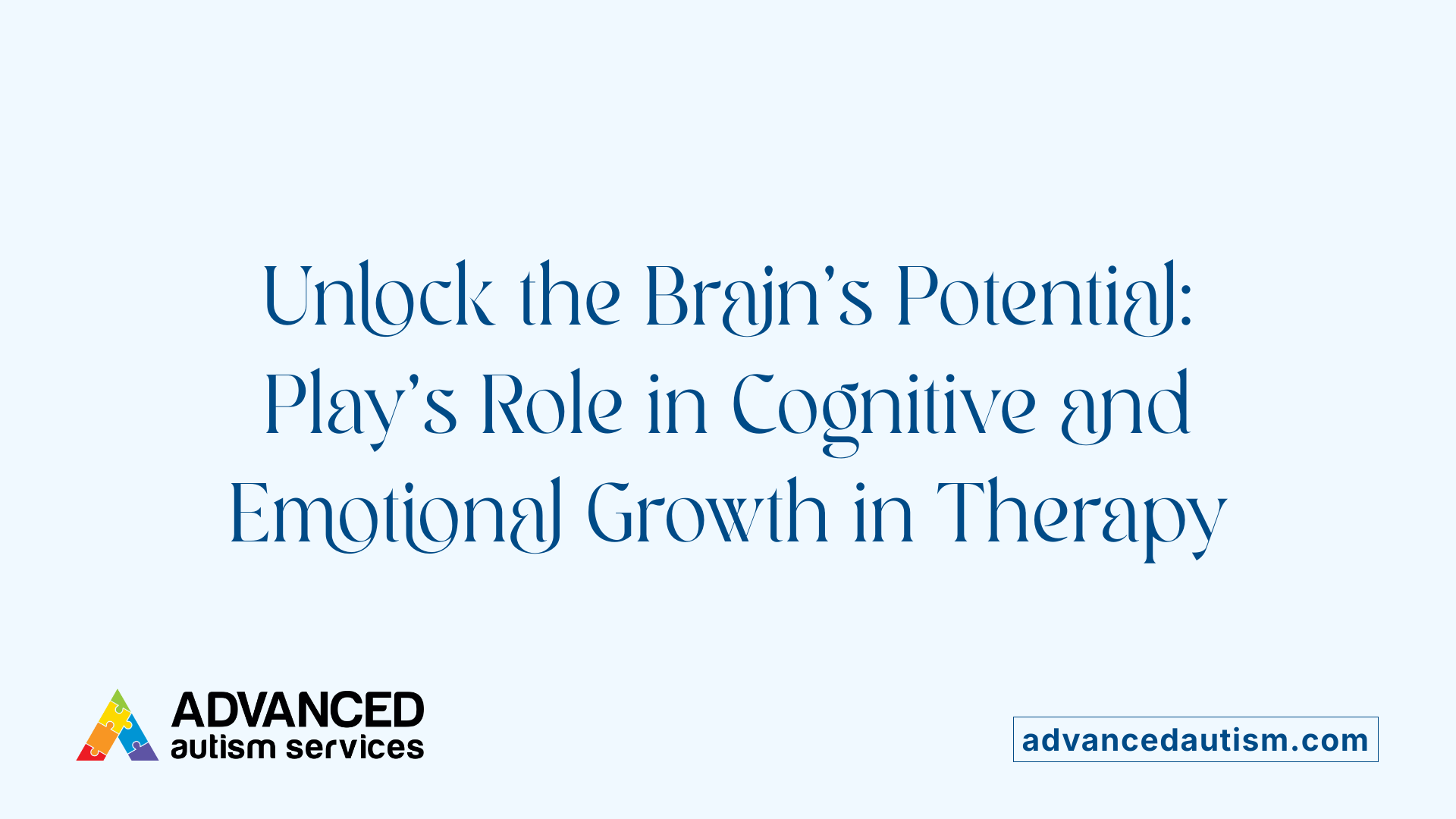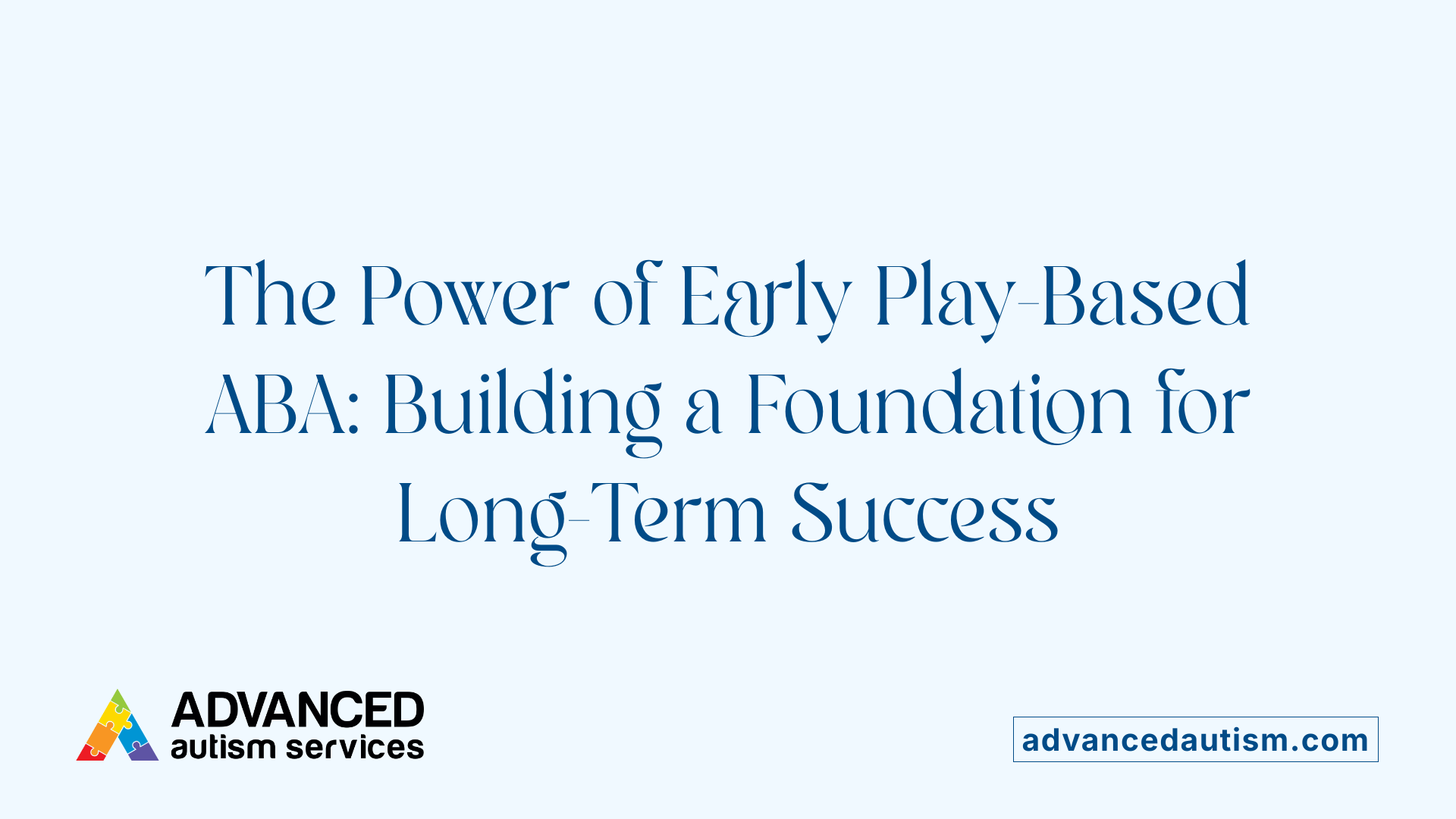The Role of Play in ABA Therapy for Young Children
Unlocking Development: How Play Transforms ABA Therapy for Young Children
Understanding the Intersection of Play and ABA Therapy
Applied Behavior Analysis (ABA) therapy is a powerful, science-based approach that helps children with autism improve social skills, communication, and daily living activities through carefully designed interventions. Within ABA therapy, play serves as a vital and dynamic tool, enriching engagement and effectiveness. This article explores how play integrates into ABA therapy, the diverse types of play used, their benefits for children's development, and how professional caregivers and families can leverage play to maximize therapy outcomes for young children.
Foundations of ABA Therapy and Its Application to Autism

What is applied behavior analysis (ABA) therapy?
Applied Behavior Analysis (ABA) therapy is a science-based treatment focused on understanding and changing behavior through learning principles like reinforcement and assessment. It aims to increase positive behaviors such as communication, social skills, and daily living abilities while reducing harmful or disruptive behaviors. ABA therapy is highly individualized, designed by trained professionals after thorough assessments. Techniques include discrete trial training, pivotal response treatment, and naturalistic teaching methods. Continuous data collection monitors the child’s progress, allowing adjustments to goals and approaches. Supported by rigorous scientific studies, ABA is widely used to improve outcomes in children with autism by tailoring interventions to each child's unique strengths and needs.
Who provides ABA therapy and in which settings?
ABA therapy services are delivered by qualified professionals trained in behavior analysis. Key providers include board-certified behavior analysts (BCBAs), who typically hold advanced degrees and oversee planning, assessments, and caregiver training. Behavior analyst assistants (BCaBAs) work under supervision, conducting assessments and supporting therapy. Registered behavior technicians (RBTs) directly implement therapy sessions, collect data, and help develop skills under supervision. These professionals operate in various environments such as clinics, schools, homes, and community centers, offering flexible therapy options to meet family needs. Selecting certified and experienced providers ensures effective treatment delivery.
How does ABA therapy help children with autism?
ABA therapy uses evidence-based strategies to increase helpful behaviors and reduce challenging ones. Structured interventions like positive reinforcement build crucial skills including communication, social interaction, and daily living tasks. Personalized treatment plans are crafted by behavior analysts and implemented by trained therapists, often involving family members for consistent support at home. Early and intensive ABA interventions have demonstrated significant improvements in language, social skills, and adaptive behaviors. Ultimately, ABA helps children with autism become more independent, better able to interact socially, and prepared to navigate real-world challenges through practical skill development and behavior management.
Integrating Play into ABA Therapy: Enhancing Engagement and Learning

How does play increase motivation and participation in ABA therapy?
Play naturally attracts children’s attention and curiosity, making therapy sessions more enjoyable and less stressful. By incorporating play, children are more motivated to engage willingly, which leads to higher participation and better learning outcomes. Activities like storytelling, role-playing, and turn-taking games keep children interested and focused, increasing their responsiveness during therapy.
How is reinforcement used through play in ABA therapy?
Play acts as a powerful reinforcement tool within ABA therapy. Positive behaviors and skill acquisition are encouraged by rewarding children's efforts through engaging play activities. This approach not only makes learning feel like fun but also strengthens the association between performing desired behaviors and receiving enjoyable outcomes, boosting the child's motivation to practice new skills.
What types of play are incorporated in ABA therapy?
ABA therapy utilizes several types of play to target various skill sets:
- Structured play: Uses specific toys and activities aimed at particular skills like requesting or following instructions.
- Functional play: Focuses on practical use of objects to develop daily living skills.
- Social play: Encourages sharing, cooperation, and group interaction to build social competence.
- Free play with guided support: Allows children to explore and express creativity while therapists gently steer learning opportunities based on the child’s interests.
How does play-based ABA therapy adapt across different settings?
Play-based ABA therapy is flexible and can be effectively implemented in homes, schools, and clinic environments. In all these settings, therapists tailor play activities to the child's developmental level and interests, ensuring a consistent and natural learning experience. Moreover, incorporating play into everyday routines helps children generalize learned skills to real-life situations, enhancing their adaptability and social functioning across various environments.
Play as a Medium to Develop Social and Communication Skills
How do play-based activities encourage communication, including storytelling and role-playing?
Play-based ABA therapy employs activities such as storytelling and role-playing to foster communication development. These interactive formats encourage children to use language expressively and understand conversational turns, enhancing both verbal and non-verbal skills.
How does play promote social skills such as sharing, cooperation, and turn-taking?
Engaging in structured and social play creates natural opportunities for children to practice sharing, cooperating, and taking turns. These social interactions occur in a safe, supervised environment, which helps children learn to relate respectfully with peers.
How do naturalistic play and Natural Environment Teaching (NET) help generalize skills beyond therapy?
Naturalistic play follows the child's interests, embedding learning into everyday activities. NET extends this approach by teaching skills in real-life settings such as home and school. This strategy increases the likelihood that children apply social and communication skills across various environments.
How is play used to practice verbal and non-verbal communication skills?
Through natural and structured play, children practice expressing needs, emotions, and ideas using words, gestures, and eye contact. Play settings encourage spontaneous communication and provide immediate feedback, aiding skill acquisition.
How does play encourage initiation of interaction and social responses?
Play naturally invites children to initiate interactions and respond to social cues like facial expressions and prompts. Role-playing and cooperative games motivate children to engage, boosting confidence in social participation and emotional expression.
Cognitive, Emotional, and Neural Benefits of Play in Therapy

How does play impact brain development and neuroplasticity?
Play is a dynamic activity that stimulates various brain areas, promoting neural connectivity and enhancing neuroplasticity. It activates sensory, motor, emotional, and cognitive circuits, particularly in the prefrontal cortex and limbic system. This stimulation encourages epigenetic molecular changes, strengthening neural cell connections crucial for learning and adaptation.
What role does play have in reducing stress hormones and increasing neurotrophic factors?
Engaging in play therapy helps lower cortisol levels, the hormone associated with stress. Concurrently, it increases neurotrophic factors like brain-derived neurotrophic factor (BDNF), which support neural growth, synapse formation, and functional brain connectivity. These biological changes underpin improvements in neurodevelopmental challenges typical in children with autism.
How does play enhance cognitive and emotional regulation skills?
Play-based ABA therapy provides a safe and motivating environment to practice negotiation, problem-solving, decision-making, and emotional regulation skills. Structured and social play experiences allow children to experience routine changes and manage frustrations, helping develop behavioral flexibility and independence. Through pretend play and role-playing, children learn practical life skills and emotional expression.
What is the relationship between play therapy and occupational/sensory integration therapies?
Occupational therapy combined with play, especially sensory integration approaches, supports children with autism in regulating sensory input, improving emotional control, and boosting social interaction. Play offers natural, enjoyable contexts for practicing these skills, facilitating improvements in daily functioning and emotional well-being.
How do innovative play therapy models support emotional regulation and social motivation?
Emerging play therapy methods, such as equine-assisted therapy and art-play therapy, provide unique sensory and social experiences that foster emotional regulation and increase social motivation. These approaches complement traditional therapies by engaging children in meaningful, motivating activities that bolster motor skills and emotional health.
The Structure and Customization of Play in ABA Therapy

Tailoring Play Activities to the Child’s Interests and Developmental Level
Play in ABA therapy is carefully customized based on each child's unique interests and developmental abilities. Therapists select toys and activities that resonate with the child, ensuring higher engagement and motivation during sessions. This personalized approach makes learning enjoyable, reducing anxiety and facilitating natural skill acquisition.
Examples of Structured Play Targeting Specific Skills
Structured play environments use specific games or materials to teach targeted skills. For example, therapists might incorporate turn-taking games to enhance communication and cooperation or introduce routine changes within play to support emotional regulation and behavioral flexibility. These intentional activities provide clear learning opportunities within a fun, controlled setting.
How Pretend and Role Play Promote Independent Functional Skills
Pretend play and role-playing exercises are integral to helping children practice everyday scenarios in a safe space. Through these activities, children gain independence by learning to follow routines, make decisions, and handle social interactions. Role play also encourages problem-solving and enhances verbal and non-verbal communication.
Assessment and Progress Tracking Through Observation of Play Behaviors
Therapists assess progress by observing spontaneous behaviors during play, such as a child's ability to initiate interactions, respond to prompts, or tolerate frustration. Play provides a natural context to monitor development and modify interventions as needed without making the sessions feel like tests.
Importance of Parental Involvement and Consistency Between Therapy and Home
Parents play a vital role by reinforcing play-based strategies at home. Consistent practice across therapy and daily routines strengthens skill generalization. Active caregiver participation in play encourages continued growth and ensures that children can apply learned abilities in various real-life settings.
Early Intervention, Parental Role, and Long-Term Impact of Play-Based ABA Therapy

Why Is Early and Intensive Play-Based ABA Therapy Important?
Early intervention with play-based ABA therapy is crucial because it leverages the brain's heightened plasticity in young children, especially before age six. Starting therapy early allows children with autism to learn new skills more efficiently and supports their overall development in socialization, communication, and daily living skills. Intensive therapy maximizes learning opportunities through structured and naturalistic play, helping children acquire essential behaviors and reducing core autism symptoms.
How Do Parents and Caregivers Support Play-Based ABA?
Parents and caregivers play a vital role in reinforcing skills learned during therapy by incorporating play into daily routines. By following their child's interests, actively participating in play, and creating consistent opportunities for social interaction, they help generalize learned skills to real-life environments like home and school. This involvement enhances motivation and engagement while ensuring therapy techniques extend beyond formal sessions.
How Are Skills Learned Through Play Generalized to Real Life?
One of the strengths of play-based ABA therapy is its emphasis on natural environment teaching (NET), which focuses on learning within everyday contexts. Skills practiced through play, such as communication, sharing, and problem-solving, are more likely to transfer to real-world situations. This generalization prepares children to apply their abilities adaptively across different settings, boosting independence and social success.
How Does Play-Based ABA Facilitate Independent Functioning?
Play fosters a broad skill set, including emotional regulation, behavioral flexibility, negotiation, and group cooperation. Through pretend play, role-playing, and guided social activities, children develop functional life skills that support independence. Structured and natural play settings also help children cope with routine changes and frustrations, vital for adaptive behavior in their daily lives.
What Are the Best Practices and Community Aspects in Delivering Play-Based ABA?
Effective play-based ABA relies on individualized treatment plans crafted by experienced therapists knowledgeable in evidence-based methods. A community approach, involving collaboration between therapists, families, and schools, ensures consistency and maximizes therapy impact. Emphasizing best practices, such as positive reinforcement, data-driven decision-making, and parent education, enhances outcomes and fosters a supportive environment for children with autism.
Understanding ABA Therapy Principles
ABA therapy is grounded in the science of behavior and learning, using positive reinforcement and behavior analysis techniques to promote desirable behaviors while reducing challenging ones. These principles guide the design and implementation of play-based interventions that are tailored to each child's needs and developmental level.
Harnessing the Power of Play for Lifelong Growth
Play is not merely a source of joy but a vital component of effective ABA therapy for young children with autism. By embedding play into therapeutic interventions, professionals can enhance motivation, facilitate meaningful communication, and foster crucial social and cognitive skills. The multi-dimensional benefits of play—from brain development to emotional regulation—underscore its integral role in helping children thrive. Early and personalized play-based ABA therapy, supported by experienced providers and engaged families, offers a path toward improved independence and quality of life. Embracing play as a foundational element ensures therapy is not only scientifically grounded but also engaging and nurturing, setting children on a journey of lasting growth and connection.
References
- The Role of Play in ABA Therapy: Making Therapy Fun
- Play therapy in children with autism: Its role, implications, and ...
- The Role of Play in ABA Therapy
- A Guide to Applied Behavior Analysis (Play-Based Approach
- Why Play is Essential to ABA Therapy for Children
- 6 Benefits of ABA Therapy for Children with Autism
- Applied Behavior Analysis (ABA)







